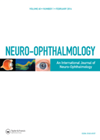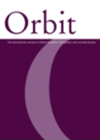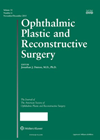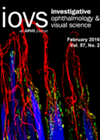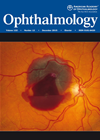
Journal Reviews
Static subjective visual vertical (SVV) in the normal visual system
Graviception is the perception of a persons’ orientation relative to gravitational force. This can be measured by means of subjective verticals, which can be divided into three tests: subjective visual vertical (SVV), subjective postural vertical (SPV) and subjective haptic vertical...
Use of RAPDx device with optic nerve disease
The authors have previously reported on use of the RAPDx device for evaluating relative afferent pupillary defects (RAPD). RAPDx objectively determines the magnitude of RAPD by presenting light stimuli alternately to pairs of eyes with laterality. The parameters of amplitude...
Differential diagnosis in cases of suspected neuroretinitis
Neuroretinitis is a form of optic neuropathy typically characterised by acute unilateral visual loss with optic disc oedema and macular exudates arranged in a star figure around the fovea (complete or partial star). The purpose of this study was to...
A case report of visual loss as a consequence of coeliac disease
The authors present a case of permanent visual loss secondary to occipital lobe calcification in coeliac disease, the first reported such case. The 58-year-old man had been diagnosed with coeliac disease 20 years prior to his visual investigations and had...
Using OCT to screen and monitor Alzheimer’s disease
Alzheimer’s disease (AD) is a neurodegenerative illness characterised by progressive decline in cognitive function. AD is the main cause of dementia worldwide. Over recent years researchers have strived to find biomarkers to diagnose AD, particularly in the early stages of...
Localising the cause of bloody tears
The authors present two cases of ‘idiopathic’ bloody tearing. The paper presents the potential causes of bloody tearing, highlighting the difficulty that can be encountered in diagnosing and managing these patients. The authors use punctal plugs in these cases which...
An unusual presentation of dysthyroid orbitopathy
The authors present a case of a 50-year-old male smoker who presented with bilateral gaze evoked amaurosis (GEA), i.e. the patient was aware of loss of vision in all gaze positions other than the primary position. The patient was being...
Bisphosphonates can cause orbital inflammation
The authors describe four patients with bisphosphonate induced orbital inflammation and review a further 25 cases in the literature. Intravenous zoledronate was the most common precipitant (76% of cases) with the mean time until onset of inflammation being three days...
Recurrent thyroid eye disease
This study investigates the incidence of recurrent thyroid eye disease. The authors retrospectively reviewed the records of 415 patients who had been diagnosed with thyroid eye disease between 2006 and 2012. The medical notes were scrutinised for evidence of a...
Bupivicaine injection for Bell’s palsy
This study assesses the use of intramuscular bupivicaine to treat lid retraction and lagophthalmos in facial palsy. It is a prospective non-comparative interventional series of 10 patients with Bell’s palsy (House-Brackman grade IV or V) who each received three serial...
RTP801 as a neuroprotective and axon regenerative treatment
This paper describes the neuroprotective and axon regenerative effects of siRTP801, which is a translatable small-interfering RNA (siRNA) targeting mTOR negative regulator; RTP801, through in-vivo and in-vitro models. In-vivo studies involved an optic nerve crush rat model with intravitreal injections...
Amiodarone-associated optic neuropathy
This is a retrospective population-based cohort study to evaluate the risk of developing optic neuropathy from the use of amiodarone in Taiwan. Over a five-year period (2005-2009), there were 6175 amiodarone-treated patients with 24,700 patients taken as controls. After a...

